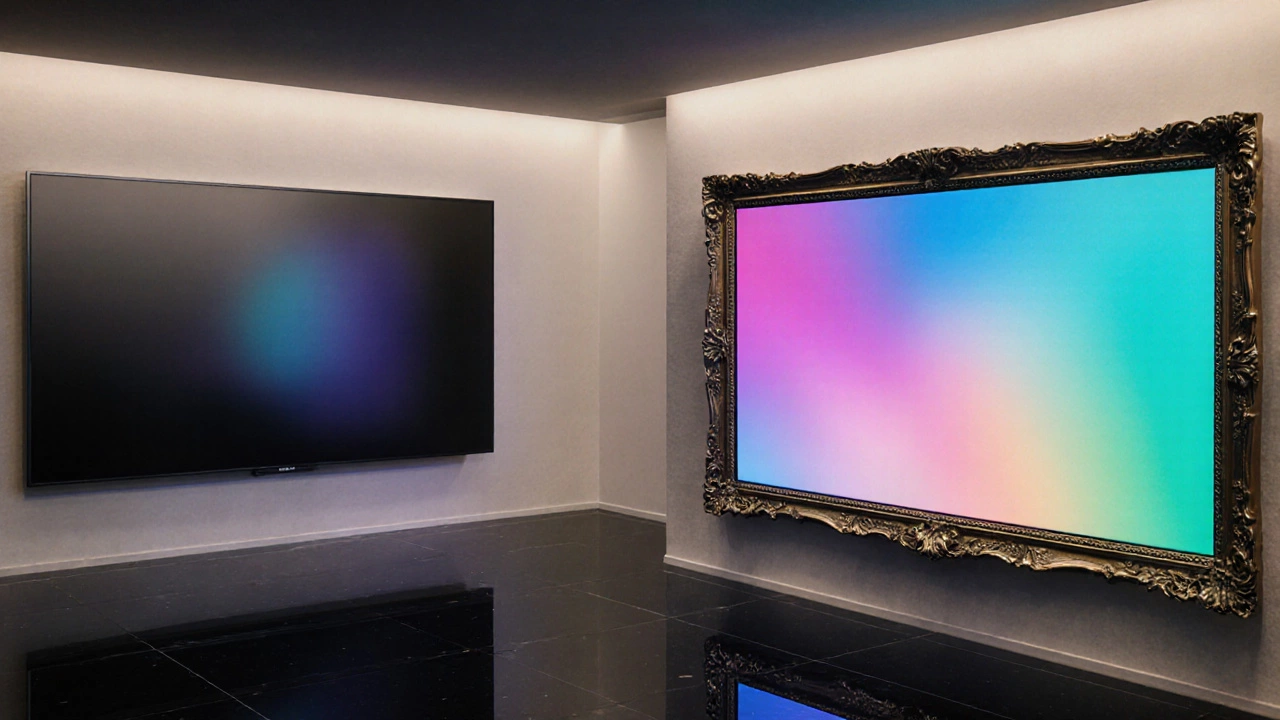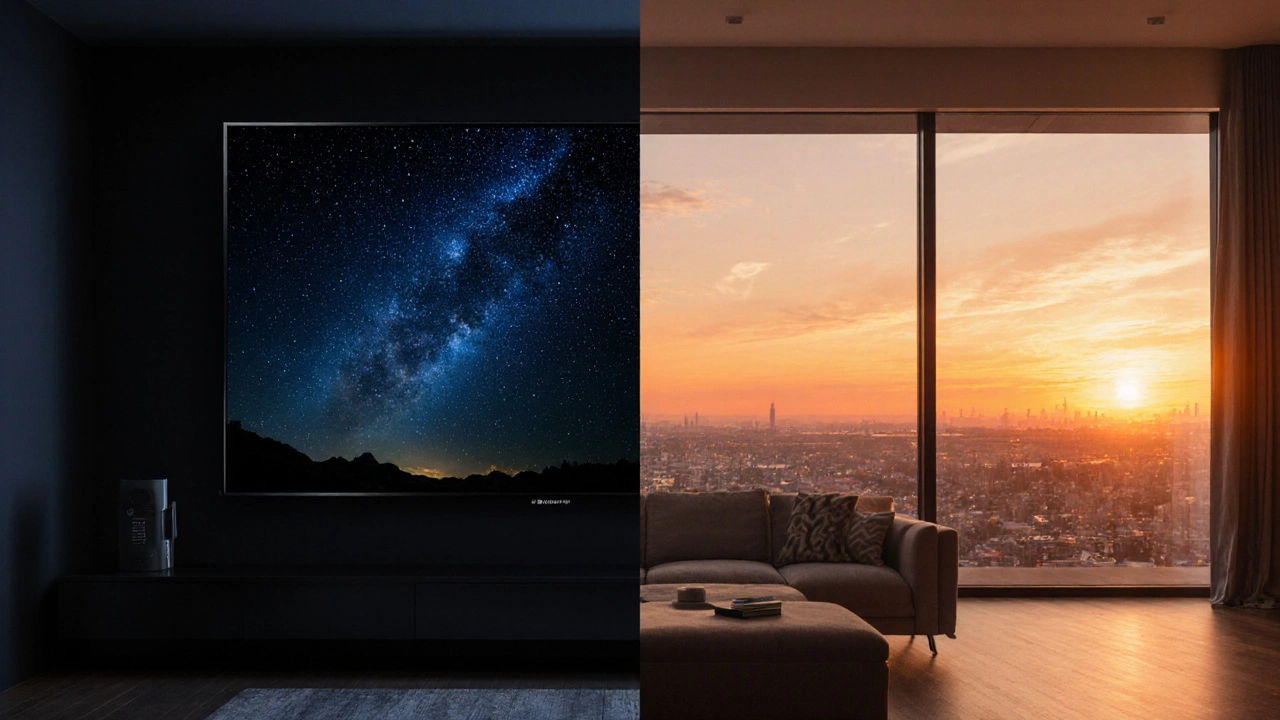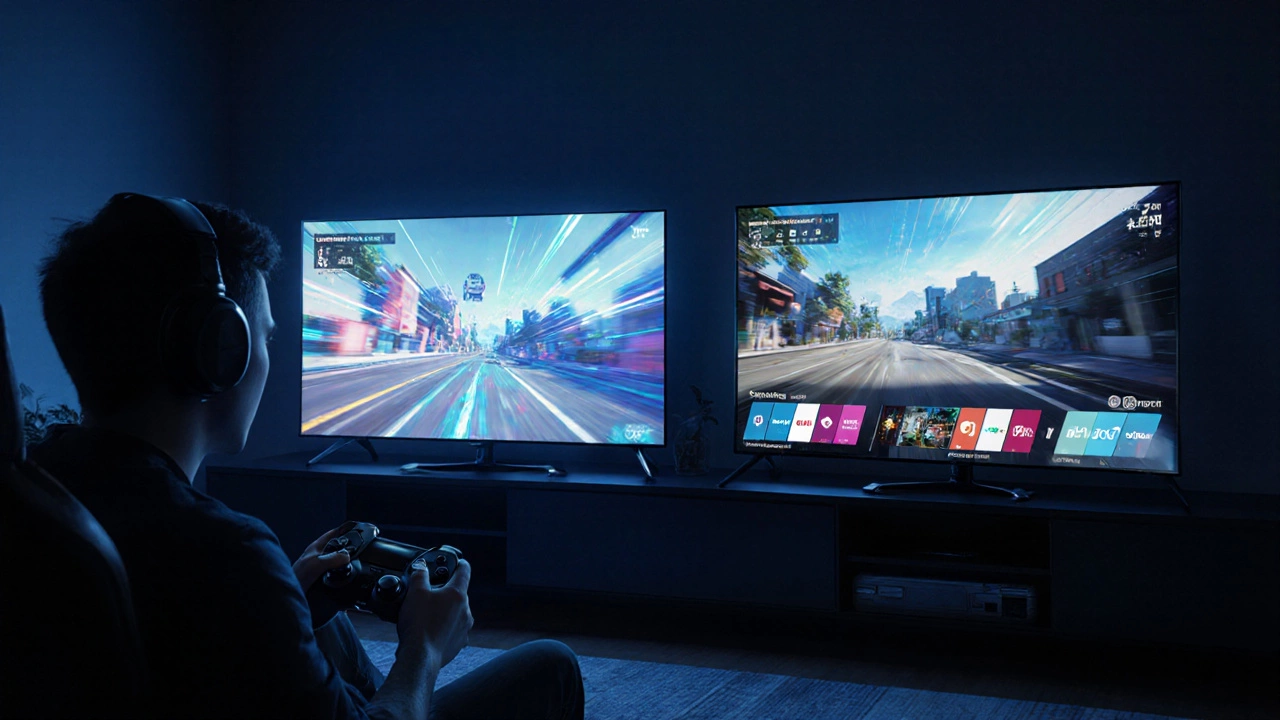
Quick Takeaways
- LG leans on OLED for deeper blacks, while Samsung pushes QLED brightness and color volume.
- Samsung’s Tizen OS feels snappier for media apps; LG’s webOS excels at simplicity.
- If you game a lot, both brands now support HDMI 2.1, but Samsung’s newer models have lower input lag.
- Price‑to‑performance peaks around £1,200 for 55‑inch OLED (LG) and £1,000 for 55‑inch QLED (Samsung).
- Choose LG for cinema‑style picture, Samsung for bright rooms and built‑in sound‑bars.
What Sets LG and Samsung Apart?
When you walk into a store and see the sleek panels of a LG Smart TV - a line of televisions that uses OLED panels, AI‑enhanced picture processing, and the webOS platform, the first thing you notice is the almost‑paper‑thin screen. Samsung, on the other hand, showcases its Samsung Smart TV - a range built around QLED technology, Tizen OS, and a focus on ultra‑bright displays. Both brands are giants, but their philosophies differ: LG pushes for perfect black levels while Samsung maximizes brightness and color punch.
Picture Quality: OLED vs QLED
LG’s OLED panels light each pixel individually, delivering true blacks and infinite contrast ratios. In a dark home theater, an LG CX or G3 will make shadow detail pop in ways a QLED can’t match. Samsung’s QLED, meanwhile, uses a quantum‑dot layer to boost brightness up to 2000 nits on flagship models like the QN90B, making it ideal for sunny living rooms. Both brands support HDR10+, but Samsung also adds HDR10+ Adaptive, which adjusts tone‑mapping based on ambient light.
In side‑by‑side tests, LG’s upscaling algorithm - Alpha 9 Gen 5 AI - restores texture on older 1080p content, while Samsung’s Neo Quantum Processor 4K focuses on color volume, keeping skin tones natural even at high brightness.
Smart Platforms: webOS vs Tizen
LG’s webOS is praised for its minimalist ribbon menu and quick app launch times. It integrates well with Google Assistant, Alexa, and Apple AirPlay 2 out of the box. Samsung’s Tizen OS offers a richer app catalog, especially for Samsung‑exclusive services like Samsung TV Plus and the integrated SmartThings hub for home‑automation control.
Both platforms support the most popular streaming services, but if you own a Galaxy phone, Tizen syncs your notifications and camera roll seamlessly. Conversely, webOS shines for users who want a clutter‑free interface that still lets you pin favorite apps.

Gaming Features: HDMI 2.1, VRR, and Low Input Lag
2025 models from both brands now include HDMI 2.1 ports, enabling 4K@120 Hz, Auto Low‑Latency Mode (ALLM), and Variable Refresh Rate (VRR). Samsung’s QLED line generally posts a 7 ms input lag in Game Mode, while LG’s OLED models hover around 9 ms. The difference is negligible for most gamers, but competitive players may lean toward Samsung’s lower latency.
Both TVs support NVIDIA G‑Sync Compatible and AMD FreeSync, though Samsung’s newer Neo QLEDs have a slightly wider VRR range (48‑120 Hz vs 48‑120 Hz on LG, but Samsung’s implementation tends to be more stable under rapid frame‑rate swings).
Design, Build, and Audio
LG’s design language this year leans toward ultra‑thin “Gallery” models that mount flush on walls, with a matte finish that hides fingerprints. Samsung’s Frame line mimics artwork, but the mainstream QN series uses a minimalist stand with a thin bezel and a built‑in One‑Connect Box that reduces cable clutter.
On the audio side, Samsung equips many models with a 2.2‑channel sound system featuring Object Tracking Sound (OTS), which creates a pseudo‑surround experience. LG’s OLEDs usually rely on Dolby Atmos‑compatible speakers; the higher‑end G3 adds a 4.2‑channel setup with upward‑firing drivers.
Price & Value in 2025
Pricing has settled after a few years of OLED price wars. A 55‑inch LG OLED (G3) starts at £1,199, while a 55‑inch Samsung Neo QLED (QN90B) starts at £999. Mid‑range 65‑inch options show a similar gap: £1,699 for LG’s C4 vs £1,449 for Samsung’s QN85C. Both brands offer entry‑level 4K panels under £600, but these lack the premium processing and HDR features of flagship models.
For value seekers, Samsung’s QLED line often includes a bundled One‑Connect Box and a 2‑year warranty, which adds up compared to LG’s standard 1‑year coverage. However, LG’s OLED resale value remains higher, thanks to the reputation for lasting picture quality.

Which Is Better for You? A Decision Guide
- Watch Mostly in Dark Rooms? Go with LG OLED - the deep blacks and accurate color grading are unbeatable.
- Bright Living Space or Lots of Daylight? Samsung QLED - its high peak brightness and anti‑reflective coating keep images clear.
- Gaming as a Primary Use? Samsung for marginally lower input lag, but both handle next‑gen consoles well.
- Prefer a Simpler UI? LG’s webOS offers a cleaner layout; Samsung’s Tizen is better for power users who want many apps.
- Budget Constraints? Samsung’s mid‑range QN85C gives most premium features for less money.
In short, there’s no outright “winner” - the best brand aligns with your viewing environment, usage patterns, and budget.
Side‑by‑Side Feature Comparison
| Feature | LG (OLED) | Samsung (QLED) |
|---|---|---|
| Panel Type | OLED | Neo QLED |
| Peak Brightness | 1,000 nits | 2,000 nits |
| HDR Support | Dolby Vision, HDR10+ | HDR10+, HDR10+ Adaptive |
| Smart Platform | webOS 23 | Tizen 8.0 |
| Gaming Latency (Game Mode) | ~9 ms | ~7 ms |
| HDMI Ports | 4 × HDMI 2.1 | 4 × HDMI 2.1 |
| Audio System | Dolby Atmos 4.2‑ch (G3) | Object Tracking Sound 2.2‑ch |
| Starting Price (55‑inch) | £1,199 | £999 |
Frequently Asked Questions
Is OLED really better than QLED for movies?
For dark‑room cinema, OLED’s ability to turn off each pixel gives infinite contrast, so black scenes look richer. QLED can get brighter, but it can’t match the depth of black that OLED provides.
Do Samsung TVs have a better app library?
Tizen’s app store includes a few exclusive Samsung services and a larger selection of niche apps, but the core streaming titles (Netflix, Disney+, Amazon Prime) are identical on both platforms.
Can I use both LG and Samsung TVs with the same soundbar?
Yes. Both support HDMI ARC/eARC and Bluetooth audio, so any modern soundbar will work with either brand.
Which brand offers better warranty coverage?
Samsung typically includes a 2‑year parts warranty on its premium QLED line, while LG offers a 1‑year standard warranty with optional extensions.
Will OLED burn‑in be an issue for gaming?
Modern LG OLEDs use pixel‑refresh and logo‑luminance handling that greatly reduce burn‑in risk. For typical gaming sessions, it’s not a major concern.